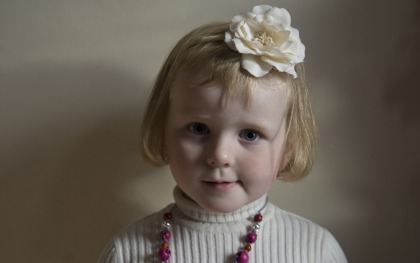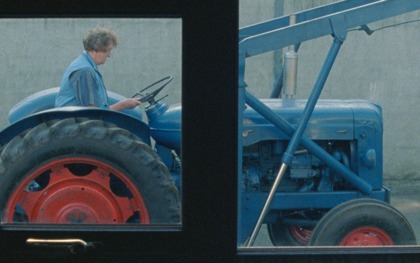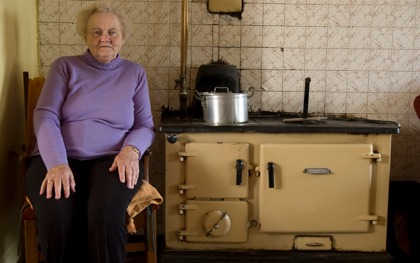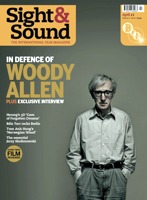Film review: His & Hers
Ireland 2009

Reviewed by Samuel Wigley
Synopsis
Our synopses give away the plot in full, including surprise twists.
Seventy women from the midlands of Ireland are interviewed about their lives, in particular their relationships with their fathers, sons, boyfriends and husbands. The interviews are arranged in ascending order of age, beginning with a baby girl and ending with elderly women. No males are seen until the final shot which shows an elderly man with a Zimmer frame.
Review
Ken Wardrup’s elegantly composed portrait of 70 Irish women of all ages – in age order – puts Samuel Wigley in mind of Alan Bennett and Ozu Yasujiro
For his award-winning 2004 short Undressing My Mother, Irish director Ken Wardrop filmed his elderly mother, a farmer’s wife for 44 years, taking off her clothes and talking frankly about her ageing body and the marks it bears of her life. Now his feature debut turns the camera on 70 women of all ages from the Irish midlands, giving them a similar opportunity to talk about their lives and families – notably the fathers, husbands and sons who, although never shown, become the film’s structuring absence.
The great originality of Wardrop’s film is that the interviews are sequenced in age order, from youngest to oldest, so that His & Hers begins with a shot of a gurgling baby girl, works its way up through various toddlers, children, teenagers, young mothers and middle-aged women, and climaxes with a run of increasingly elderly pensioners. The effect is gently surreal and initially disorienting – akin to watching a slowed-down version of the trick beloved of TV commercials in which a succession of faces rapidly morphs into the next.

Held in elegantly composed fixed shots – and alone in the frame in endless permutations of the banal suburban kitchen, living room and bedroom – each woman in turn holds forth for a few minutes at a time. Their talk is of the everyday, of routines, preoccupations, domestic annoyances and longings, but it is frequently hilarious. Tales of playtime give way to those of adolescent romance (full of the primacy of the text message, and in which a ‘long’ relationship might extend all the way back to the start of the year), evolving later into affectionate but exasperated revelations of married life, then taking a poignant turn into stories of dotage. These final stages are still wonderfully funny, typically as a grandmother discusses her trouble getting to grips with modern contrivances such as “the emails”, but also immensely moving as the women’s lives become ever more coloured by illness and death.
Menfolk are talked about endlessly. We see a sheet featuring a garish black panther hanging in a doorway, unmistakably demarcating a husband’s boyish den. We hear of one husband’s rare but sacrosanct ventures into the kitchen for the fastidious preparation of a curry that will use every utensil available, creating mountains of washing-up of which he considers himself absolved. But the men’s invisibility in the film – at least until the exhilaratingly ambiguous final shot – assumes a melancholy dimension by the time His & Hers reaches its septuagenarians and the men’s out-of-sightness becomes real, an ineluctable, mortal absence.

These mini monologues laid end-to-end amount to something Alan Bennett would have been proud to write. Talking heads may be better suited to television but Wardrop’s film is assuredly cinematic in its compositions, the grainy, pastel-hued 16mm images a joy to behold. If those low shots of empty hallways fleetingly recall Ozu, the association is not inappropriate: Wardrop’s film is correspondingly preoccupied with women as the linchpins of domestic life.
Indeed, if His & Hers is open to criticism, it is in this concentration on women in their housebound roles. Though many dozens of women are interviewed, their lives are homogeneous to the point of interchangeability, each of the adults defined by their roles as wife and mother. Wardrop apparently pooled his interviewees from a radius of 50 miles, so perhaps he needed to look further afield for more progressive examples of womanhood, or perhaps his selection was finessed to make the film’s phasing structure seamless. Or it may be that, having accumulated material this rich, comic, sad and telling, Wardrop decided those 50 miles were enough.
See also
Day in the life: Sheila Johnston on The Hours (February 2003)
Emotional engineering: Nick James on A One and a Two… (Yi Yi) (April 2001)
Credits
- Directed by
- Ken Wardrop
- Produced by
- Andrew Freedman
- Directors of Photography
- Michael Lavelle
- Kate McCullough
- Film Editor
- Ken Wardrop
- Music
- Denis Clohessy




